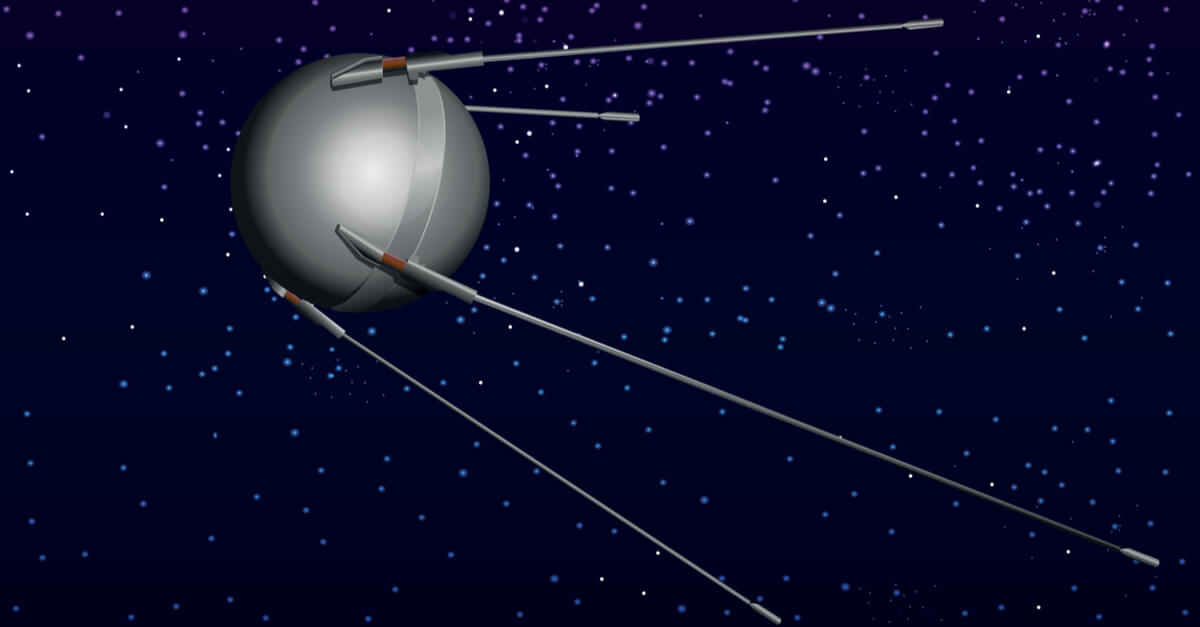Sputnik I, the world’s first artificial Earth satellite, was launched into orbit around Earth on October 4th, 1957, by the Soviet Union.
Sputnik I
Sputnik I was about the size of a basketball, weighed only 183 pounds, and took about 96 minutes to orbit the Earth on its elliptical path. It was a metal sphere that measured 58 cm (23 in) in diameter. The satellite also had four external radio antennas to broadcast radio pulses for tracking purposes.
America’s Reaction
The news of this launch shocked the United States Government, who did not expect it for at least several more years. Sputnik also shocked many American citizens. Some even feared that Sputnik might be some sort of weapon. The event was broadcast live on radio, and the announcer’s voice was the first human sound transmitted from space in recorded history.
The American press called it a “super bomb” and “Jap-buster,” fearing that its presence would allow the U.S.’s Cold War enemy to drop bombs on them from space.
The Launch
The Soviets launched it from the Baikonur Cosmodrome using a modified Intercontinental Ballistic Missile (ICBM) designed by Sergei Korolev and his team of scientists and engineers. The satellite traveled at about 29,000 kilometers per hour (18,000 mph), taking 96.2 minutes to complete each orbit.
Sputnik I orbited the Earth every 98.1 minutes for three months before its batteries died, then fell from orbit on January 4th, 1958. It burned up upon entering the atmosphere over the southern Indian Ocean. The success of Sputnik 1 heralded the start of the space race and triggered the Space Race between the United States and the Soviet Union.

